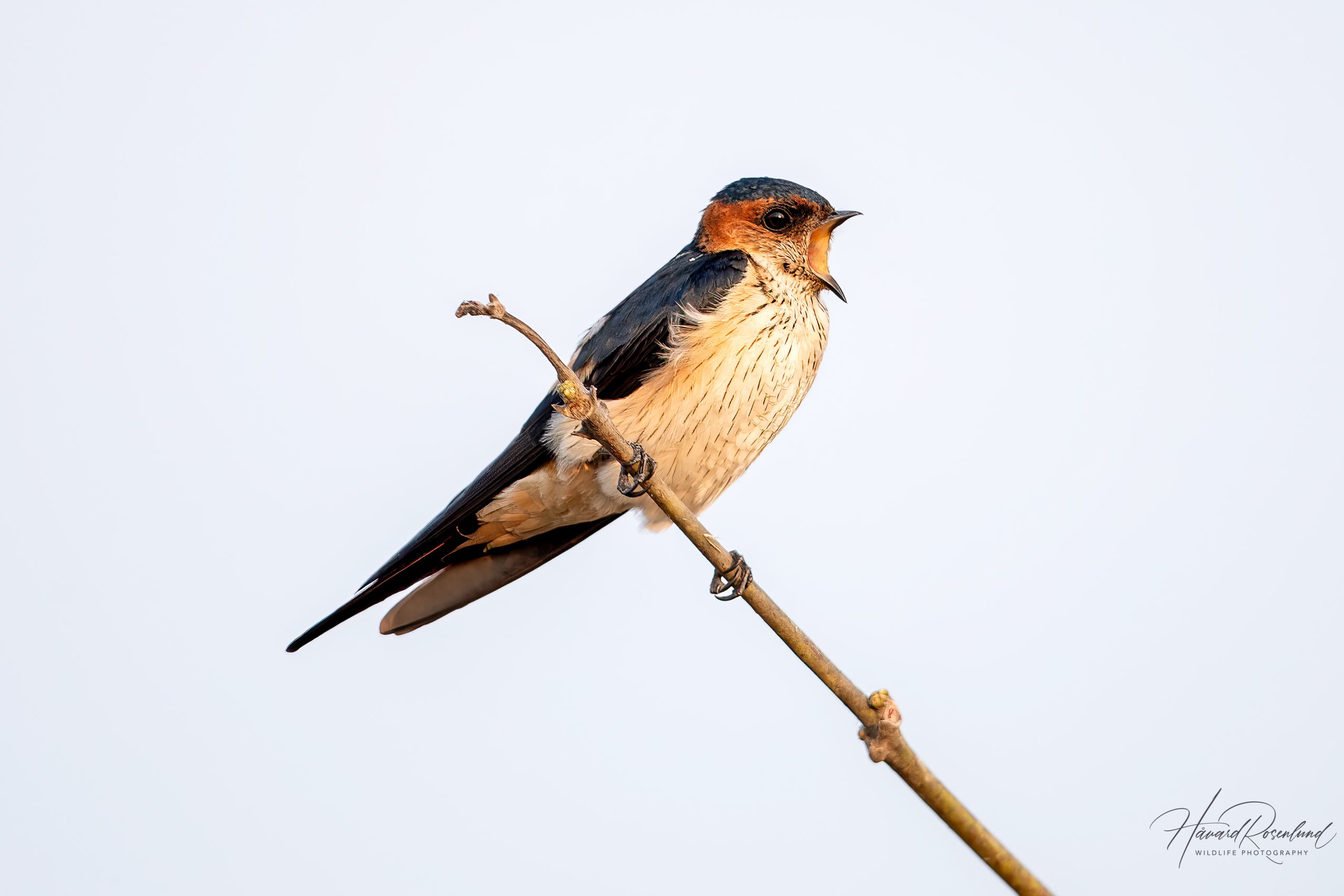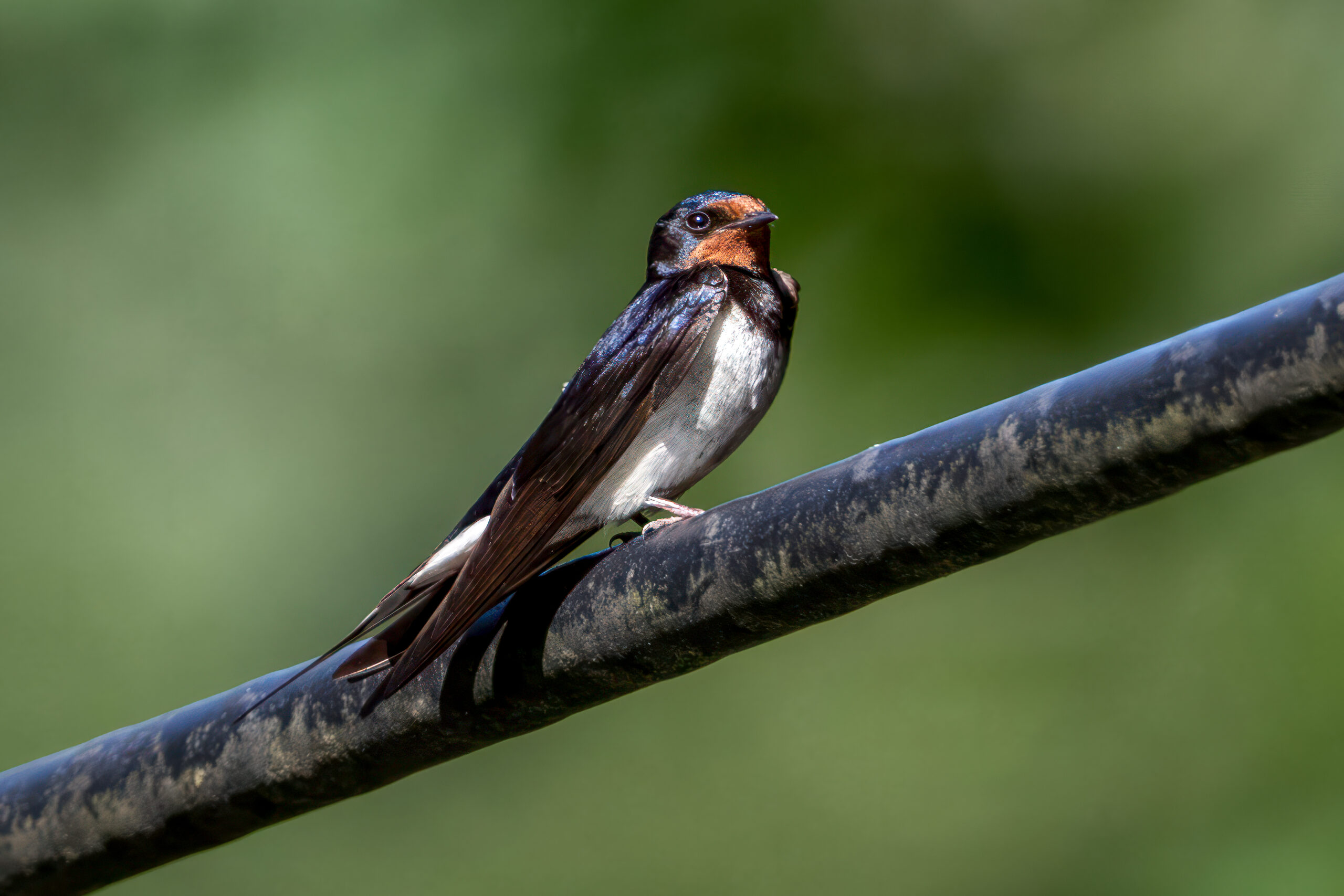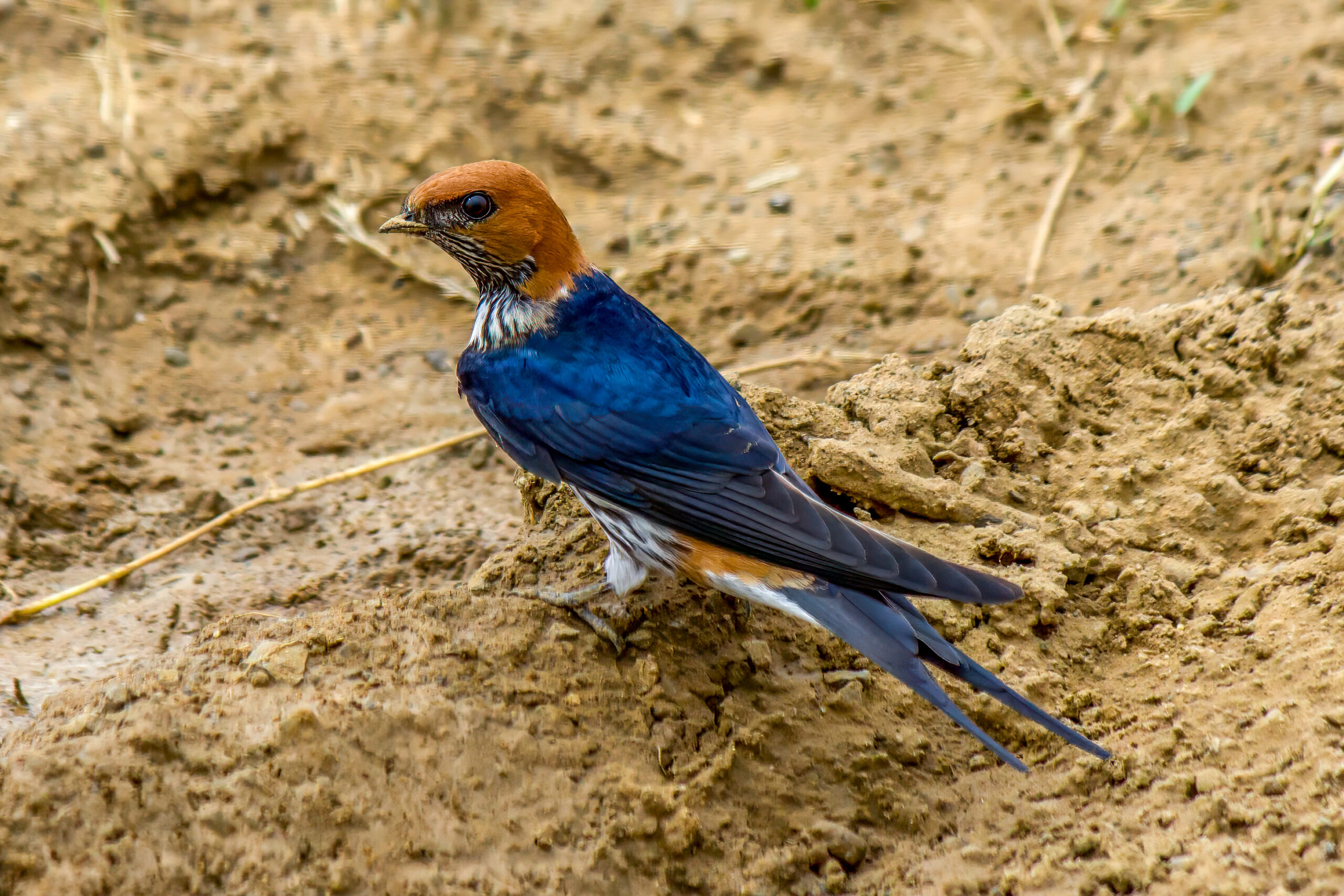Description
The red-rumped swallow (Cecropis daurica) is a small passerine bird with a range extending from southern Europe and northern Africa, through the Middle East, Central Asia, and into parts of South and East Asia. It is characterized by its sleek, streamlined body and colorful plumage. It measures about 16-17 cm (6.3-6.7 in) in length, with a wingspan ranging from 32 to 34 cm (12.6-13-4 in). Its most distinguishing feature is the rich reddish-brown or rufous color of the rump and sides of the head, contrasting sharply with its otherwise dark blue-black upperparts. The underparts are pale with fine dark streaks, particularly on the breast and flanks.
The red-rumped swallow is very similar in appearance to the striated swallow (Cecropis striolata), with which it was once considered conspecific. However, the red-rumped swallow generally has less intensely streaked underparts, is smaller in size, and often has a more defined neck collar.
Diet & habitat
The preferred habitats of the red-rumped swallow include open countryside, agricultural areas, and urban or suburban settings, especially where there are cliffs or buildings suitable for nesting. The species is also commonly found in mountainous regions and at lower elevations, particularly near rivers and lakes.
The red-rumped swallow is primarily insectivorous, feeding on a wide variety of flying insects, which it catches in flight. It is an agile flier, often seen skimming low over fields, water bodies, and open woodlands, where it captures its prey with remarkable precision. The bird’s diet mainly includes flies, beetles, and other small arthropods, which it often gathers in mixed-species flocks alongside other swallows and swifts.
Migration
The red-rumped swallow is a migratory bird, with populations in Europe and Asia undertaking long-distance migrations to their wintering grounds in sub-Saharan Africa, South Asia, and Southeast Asia. Migration typically occurs in two major phases: in late summer to early autumn when the birds leave their breeding grounds, and in late winter to early spring when they return. These swallows cover vast distances during their migrations, and their timing is closely linked to the availability of food and suitable weather conditions along their migratory routes. There populations in Africa and South Asia that are resident year round.
Nesting
Breeding season for the red-rumped swallow varies geographically but generally falls between April and August. The species is known for its distinctive nesting behavior, often building mud nests attached to the sides of cliffs, buildings, or under bridges. These nests are flask-shaped, with a small entrance tunnel, and are often reused or repaired each year.
Both parents participate in the construction of the nest and in feeding the young. The female typically lays 3-5 eggs, which are incubated for about 14-16 days. After hatching, the chicks are fed by both parents and fledge approximately 20-25 days later. The red-rumped swallow may have one or two broods per breeding season, depending on environmental conditions.
Status
The red-rumped swallow is listed as least concern by the IUCN, owing to its wide range and stable population trend. However, like many other insectivorous birds, it faces threats from habitat destruction, particularly the loss of traditional nesting sites due to changes in building practices and agricultural intensification. Additionally, climate change poses potential risks by altering the availability of food resources and the timing of migration.








